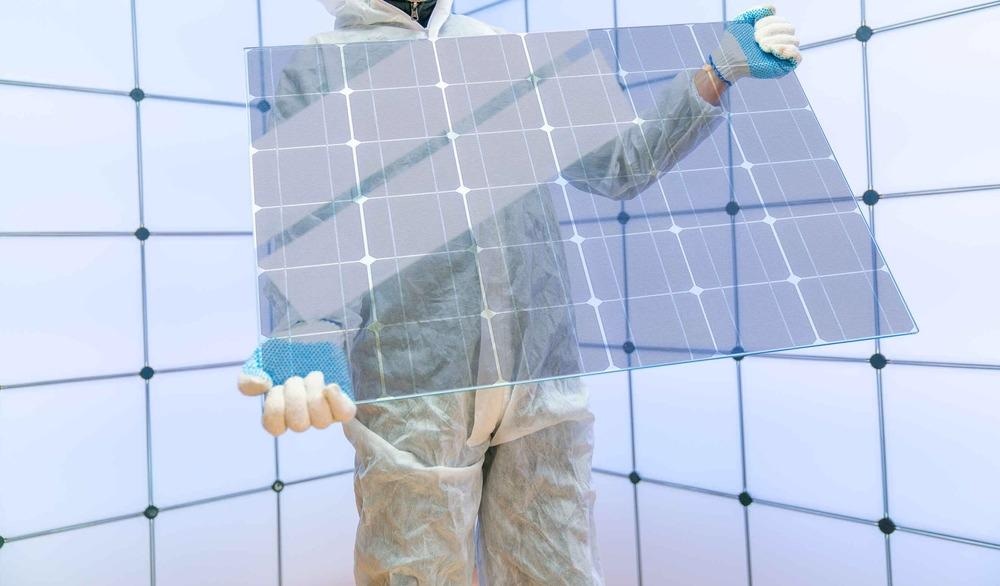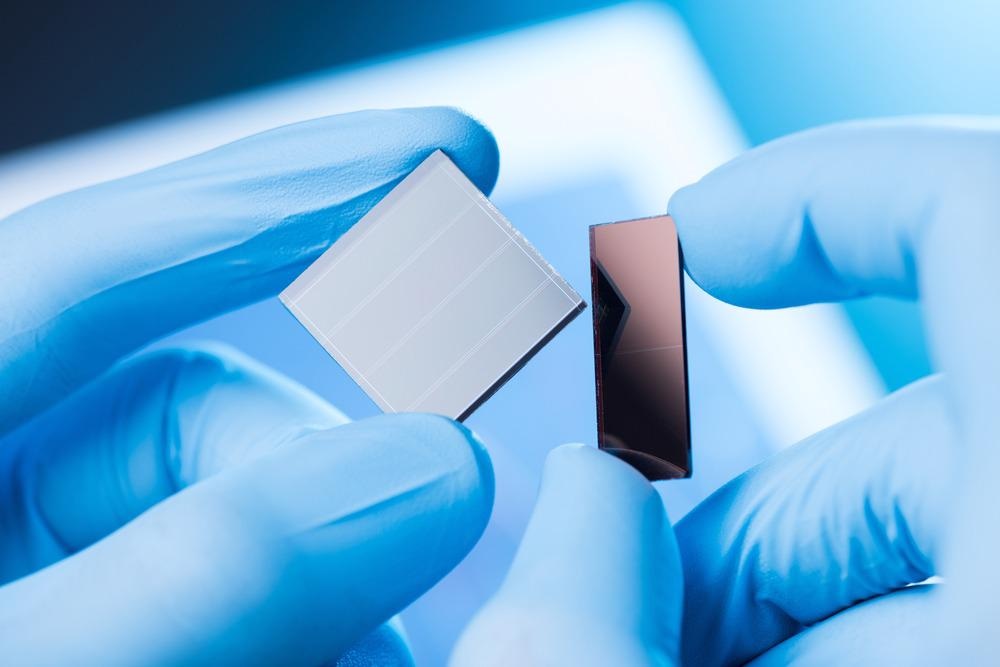This article discusses the potential of BiY(1-x)MnxO3 ceramics for photovoltaic (PV) applications.

Image Credit: luchschenF/Shutterstock.com
Limitations of Conventional P-N Junction Solar Cells
The efficiency of traditional p-n junction solar cells is limited to 31% - 41% depending on the sunlight concentration. Moreover, expensive crystalline silicon modules are used for the production of p-n junction solar cells, which makes these PV materials economically unviable for power harvesting applications compared to other energy generation sources.
Significance of Low Band Gap FE Materials for Solar Cell Applications
Low bandgap ferroelectric (FE) materials have gained significant attention from the scientific community due to their FEPV effect. Low bandgap FE materials have unique properties and demonstrate higher photovoltage than their bandgap. Additionally, FE materials' polarization-electric (P-E) field facilitates controllable and efficient carrier separation, making them an attractive alternative for high-efficiency and low-cost solar cells.
FEPV materials can also isolate the photogenerated electron-hole pair through the polarization-induced electric field. Thus, charge carriers can be separated in FEPV materials without heterojunction constructions, unlike in p-n junction solar cells where a barrier field acts as an external field for charge carrier separation.
Inefficient absorption of sunlight due to the presence of a large bandgap and poor direct current (DC) conductivity is restricting the adoption of common FE oxide materials, such as barium titanate and lead titanate, for commercial solar cell applications. The wide bandgap in FE oxide materials is attributed to the large electronegativity difference between the oxygen ion and B-site transition metal cation.
Bismuth ferrite has attracted considerable attention as a PV material owing to its high polarization and lower bandgap compared to other FE oxides. The bismuth (Bi)-based perovskite ferroelectrics are more suitable than lead (Pb)-based perovskites due to the existence of 6s2 lone-pair in the Bi3+ ion. However, the bandgap of these materials is not sufficiently low for absorbing the broader range/more than 80% of the solar spectrum.

Image Credit: nevodka/Shutterstock.com
Solar cell efficiency primarily depends on the incident radiation spectrum and band gap value. In single-junction solar cells, the maximum conversion efficiency for air mass 1.5G radiation is observed at a bandgap of 1.34 eV, while the permissible variable range of the bandgap is 0.67 eV to achieve 90% of the maximum efficiency. Thus, materials with multi or variable band gaps can enhance the PV efficiency significantly, as they can provide a range of bandgap energy.
In conventional FE materials/ABO3 perovskites where the ferroelectricity is attributed to the d0 ness of the B-site transition metal cation, the bandgap often exceeds 3.0 eV. Any attempt to reduce the bandgap can deteriorate their ferroelectricity.
To achieve FE materials suitable for PV applications, the bandgap of these materials must be reduced without affecting their FE properties. Multiferroic materials can display ferroelectricity without the d0 ness of B-site cation. Thus, these materials can be suitable for designing low bandgap FE PV materials. A bandgap of 2.0 eV is necessary to absorb more than 50% of the solar spectrum.
Potential of BiY(1-x)MnxO3 (BYM) Ceramics as a Suitable Material for PV Applications
In a recent study published in the journal Ceramics International, researchers combined BiMnO3 with good FE properties and bismuth yttrium oxide ceramic with good absorptivity to synthesize BYM ceramics in the form of a solid solution with high carrier mobility, ferroelectricity, and low bandgap. The values of x were 0.75, 0.50, 0.25, 0.10, and 0.0.
In multiferroic BiMnO3, the ferroelectricity originates due to the presence of a lone pair of Bi at the A-site and persists up to the FE transition temperature of 425 K. Thus, large photovoltage can be expected in BYM as its ferroelectricity is similar to bismuth ferrite. Additionally, manganese (Mn) doping in the synthesized BYM ceramic can increase PV efficiency. In several perovskite ferroelectrics, Mn doping has reduced the bandgap and improved ferroelectricity.
In BYM, the hybridization of O-2p either with Mn-3d or Bi-6s or both can shift the valence band maxima to the upper side, leading to the reduction in the bandgap. Moreover, the existence of orbitals with energy levels higher than the valence band in the synthesized ceramics can provide several absorption edges. Thus, different concentrations of Y and Mn at the B site in the Bi-containing oxide fluorite system can potentially lead to the development of significantly efficient FEPV material.
The findings of this study demonstrated that the Mn doping enhanced the dielectric constant, leading to superior polarizability. Both grain boundary and grain resistances reduced significantly with the increasing Mn concentration and rising temperature, resulting in an enhanced charge carrier conductivity.
The bandgap in the BYM system was reduced successfully, with the lowest bandgap value of 1.76 eV observed at x=0.50, which is lower than the bandgap value of 1.92 eV in Mn-doped bismuth ferrite. The FE behavior in all samples was confirmed in the P-E hysteresis loops and enhanced polarization was observed in solid solutions with higher Mn concentrations.
To summarize, novel FE oxide materials such as BYM with sufficiently low band gaps could be used effectively for thermoelectric and solar cell applications.
More from AZoM: Use and Applications of Flame Atomic Absorption Spectroscopy
Reference and Further Reading
Prajapati, P., Singh, A. K. Development and characterization of (1-x)BiYO3-xBiMnO3 ceramics for Ferro-photovoltaic applications, Ceramics International 2022. https://doi.org/10.1016/j.ceramint.2022.05.173
Disclaimer: The views expressed here are those of the author expressed in their private capacity and do not necessarily represent the views of AZoM.com Limited T/A AZoNetwork the owner and operator of this website. This disclaimer forms part of the Terms and conditions of use of this website.